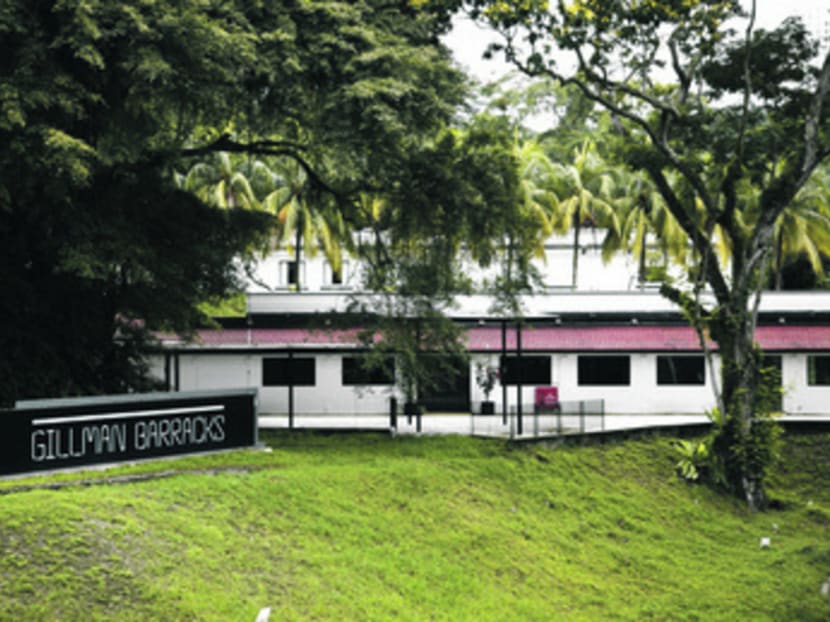Pop-up galleries, open call for new tenants at Gillman Barracks
SINGAPORE — Gillman Barracks (GB) may have been recently hit by the departure of a handful of its gallery tenants, but it has announced plans to bring in replacements and to beef up its offerings.

Gillman Barracks. Photo: EDB Singapore.
SINGAPORE — Gillman Barracks (GB) may have been recently hit by the departure of a handful of its gallery tenants, but it has announced plans to bring in replacements and to beef up its offerings.
The visual arts hub will be holding an open call for new gallery tenants at the end of the month. It will be open to both local and international galleries, and those selected are scheduled to open early next year and will join the current slate of 11 galleries.
Three of these — FOST Gallery, Sundaram Tagore Gallery and Partners & Mucciaccia — have renewed their leases for a “significant number of years”, said Kow Ree Na, director of the lifestyle programme office at the Economic Development Board, which is one of Gillman Barracks’ co-developers. She added that Partners & Mucciaccia have also announced that it will expand its current gallery space.
Kow also said that they will not be committing to a specific number of new gallery tenants and will instead be sifting through “quality proposals” and finding the right match between spaces and galleries.
In addition, a new pop-up programme will also be launched. It will focus on South-east Asian gallerists and artists, who can rent spaces for one- to two-month long exhibitions.
Meanwhile, other creative and art-related pop-ups will also be presented at spaces in Block 47, which are in-between tenants. The first of these is the SG50 Art Archive Project by Singapore artist-archivist Koh Nguang How, a former artist-in-residence at the NTU Centre for Contemporary Art (NTU CCA) Singapore, one of Gillman Barracks’ tenants. It opens on Jul 25, during the bi-monthly open house event Art After Dark, which will be held during the daytime for this particular edition.
When asked if the addition of pop-up galleries would likely lead to competition with long-term tenants, Kow said the latter have already expressed support and cited how the pop-up shows can offer “an element of surprise”. The pop-up gallery programme can also offer regional galleries, which would have difficulties running as a regular space, a chance to be part of the Gillman Barracks environment.
The arts hub has had to deal with the news of the departure of galleries such as Silverlens and Equator Art Projects, most of which were in Block 47 in Malan Road. Sluggish sales and low visitorship were cited by most as the main reasons for not renewing their leases. The arts hub, which was launched in September 2012, has also come under fire for the slowness in addressing issues of accessibility and traffic.
Kow admitted that the development of GB’s other aspects beyond the commercial galleries had taken some time, citing how the decision to launch the gallery spaces first was in the context of latching on to the wave of interest surrounding Art Stage Singapore back then.
Gillman Barracks has since added to its offerings, from the opening of the NTU CCA and its various projects to building a pedestrian walkway and slowly bringing in more F&B outlets.
Slated to open at the end of the year are Handlebar, one of the original tenants at what was the former Gillman Village, and a cafe that is yet to be named. Most recently, Red Baron, a cafe and bar, opened near the NTU CCA building.
To further cater to a wider range of audiences, two non-profit organisations are set to come in and occupy part of Block 47: Art Outreach, which aims to promote art appreciation among the broader public, and Playeum, which focuses on art appreciation for children. The latter will be launching its first exhibition, The Art Of Speed, in September.
When asked whether the inclusion of these non-commercial entities would dampen the image of Gillman Barracks as an area for commercial art, Kow emphasised that the intention has always been for it to be a “visual arts cluster”.
Low Eng Teong, director, Sector Development (Visual Arts) for the National Arts Council, a co-developer, said that while the commercial galleries will still be at the core of Gillman Barracks — and drawing in top galleries during the early stages was its main focus — there was also a need to cater to different sectors. “Attracting footfall (to the galleries) is definitely important but growing the base (of art-lovers) is equally important,” he said.







